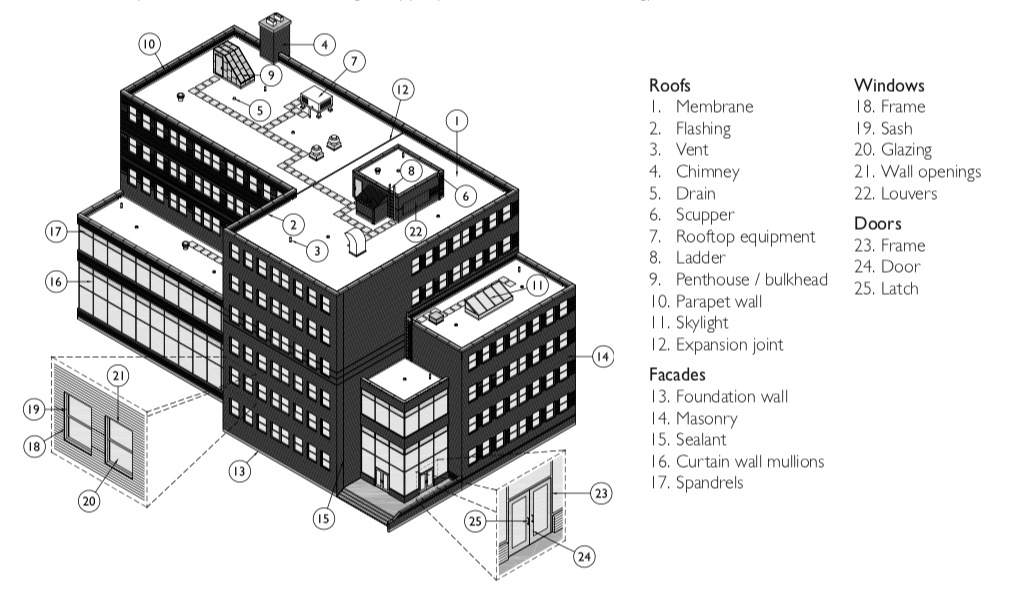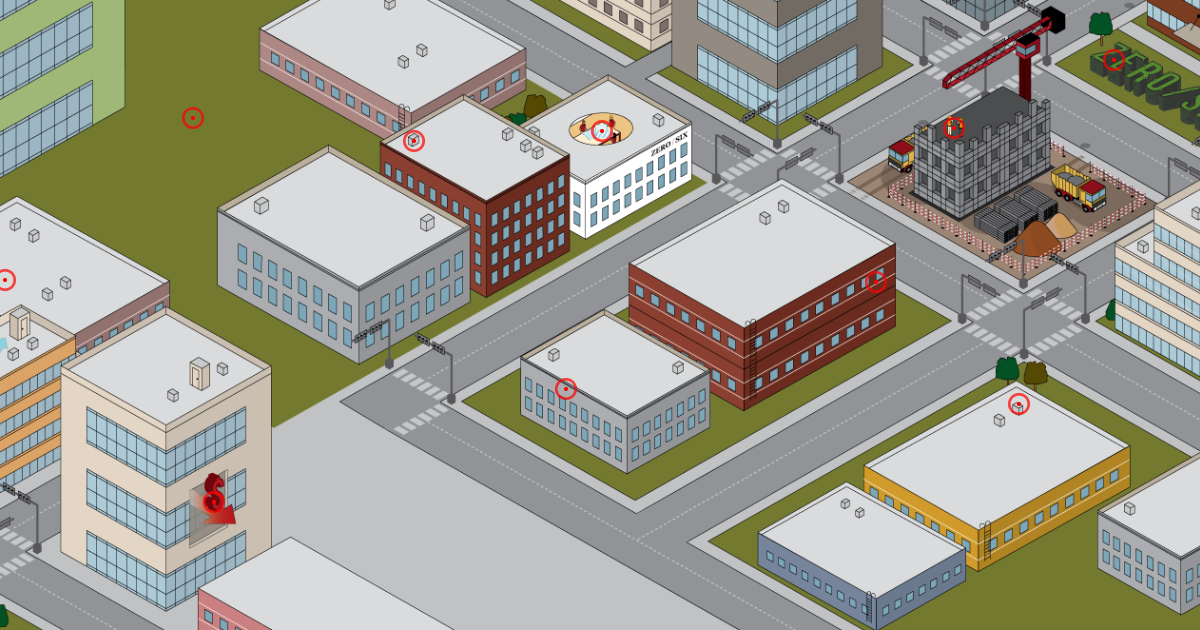An ounce of prevention is worth a pound of cure. Our Building Consultants at Mavin Consulting work numerous multi-million-dollar large loss commercial property damage claims each year throughout the nation. As 3rd party experts, one of the biggest issues we see on these claims is carrier denial due to lack of maintenance, wear and tear, and improper installation. Having routine building envelope inspections performed is important to ensuring that doesn’t happen, as well as ensuring your property is structurally safe and sound. Getting an annual inspection is recommended for Industrial/Commercial Building Owners, Property Managers and Homeowner’s Associations (HOAs).
What Is A Building Envelope Inspection?
The building envelope or building enclosure is everything that separates the internal building from the external environment. A building envelope inspection provides a comprehensive assessment of the exterior components of a building, ensuring that any potential issues are identified and addressed before they become major problems. The inspection measures the structural integrity, safety and energy efficiency of your property, and also provides valuable knowledge that can help mitigate costly damage and repairs in the future.
The building’s exterior envelope is part of a well-oiled system that protects the interior and structure of a building. All exterior components are carefully inspected including the foundation, roofing systems, exterior wall systems, air barriers, windows, and doors. One underperforming component, whether due to poor maintenance, material degradation, improper install or inadequate design, can lead to a complete system failure and increased vulnerability to extreme damage.
10 Reasons You Need a Routine Building Envelope Inspection
- Knowledge Is Power: You can’t fix it if you don’t know it’s broken. By identifying and catching the problem early, you can get it corrected, avoid the costly surprise of major issues down the road and extend the lifespan of your structure.
- Structural Integrity: A building envelope inspection assesses whether any structural issues are present.
- Preventive Maintenance: A building envelope inspection identifies potential issues before they become major problems, saving you a whole lot of headache, hassle, and money.
- Safety: Routine maintenance can help prevent safety hazards such as potential collapses and detect any water or air leaks.
- Water Intrusion: A building envelope inspection detects any areas where water may be entering the building. Water leaks can wreak costly havoc on the structure and contents, and if left undetected, will quickly turn into an even bigger issue in a major weather event.
- Structural Longevity: The building envelope is critical to the longevity of the building. A properly maintained structure will help prevent moisture intrusion, which can lead to structural damage, mold growth, and other issues that can compromise the integrity of the building and its lifespan.
- Legal Compliance: Many local building codes require periodic inspections of the building envelope to ensure compliance with safety and energy efficiency standards.
- Energy Efficiency: The building envelope inspection highlights areas where energy is being lost, whether through air leaks or inadequate insulation. This saves significantly on heating and cooling costs.
- Real Estate Transactions: When buying or selling or even getting an appraisal, the building envelope inspection includes valuable information that will benefit both parties.
- Documentation: A routine building envelope inspection provides high-resolution photos, thermal imaging, moisture maps, and 4K/HD/3D aerial drone photograpy and video. This important documentation can make a world of difference in an insurance claim dispute down the road, especially when the question pertains to when the condition started.

Photo Source: Hoffman Architects
What’s Included In A Building Envelope Inspection?
- Foundation: Inspection of the foundation for signs of settling, cracking, and water damage, as well as an assessment of the drainage system to ensure proper water flow and management.
- Structural Integrity: Inspection of the building’s structural components, including the roof, walls, windows, and doors, to ensure that they are functioning properly and safely.
- Walls: Inspection of the exterior walls for signs of damage or deterioration, such as cracks, missing or damaged mortar, and water damage.
- Windows and Doors: Inspection of the windows and doors for proper operation, sealant condition, and weather-stripping, to ensure they are energy-efficient and secure.
- Air and Water Infiltration: Inspection of the building envelope for air and water infiltration, including a review of the insulation, vapor barriers, and weather-stripping to identify any gaps or leaks that may be allowing energy to escape.
- Roofing: Inspection of the roofing material, flashings, gutters, and downspouts for signs of wear and damage, such as missing or damaged shingles, cracks, and leaks.
Every Detail Counts: Identifying Leaks
Undetected interior leaks tend to be common culprits of damage. Water can enter the interior of the building in numerous ways:
- Gaps or cracks in the mortar joints of a brick façade
- Broken seals around windows
- Building grade issues
- Porosity of the EIFS / split-face block
- Lintel detail around the doors
- Clogged drains
- Window wells improperly installed
- Foundation compromised
Not only can intruding moisture cause leaks, flooding, and deterioration, it often leads to poor indoor air quality (IAQ) and a breeding ground for mold and bacteria. These issues can eventually lead to foundational and structural failure, resulting in health issues and very complicated and expensive repairs.
Run, don’t walk, to get your routine building envelope inspection. You’ll thank us later.



